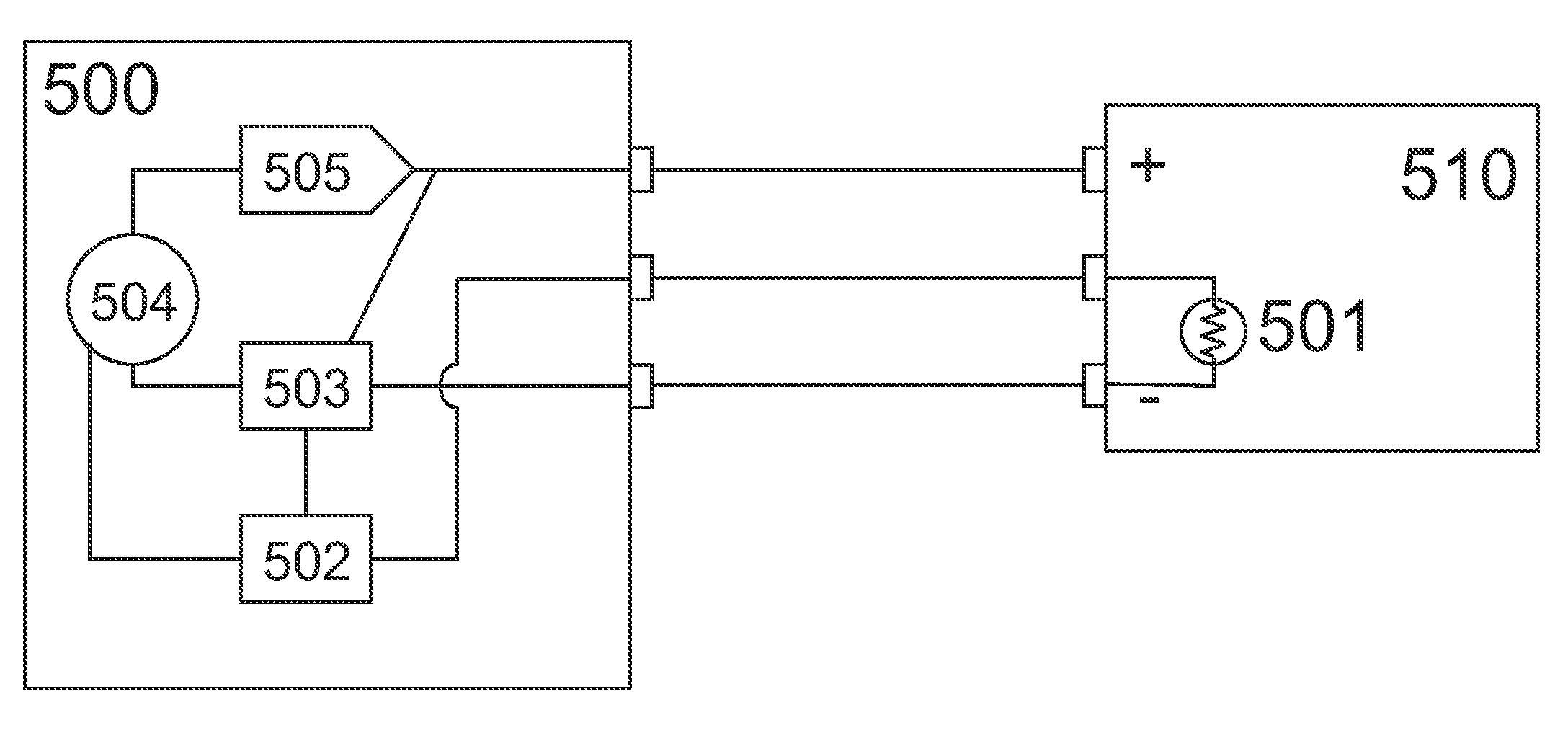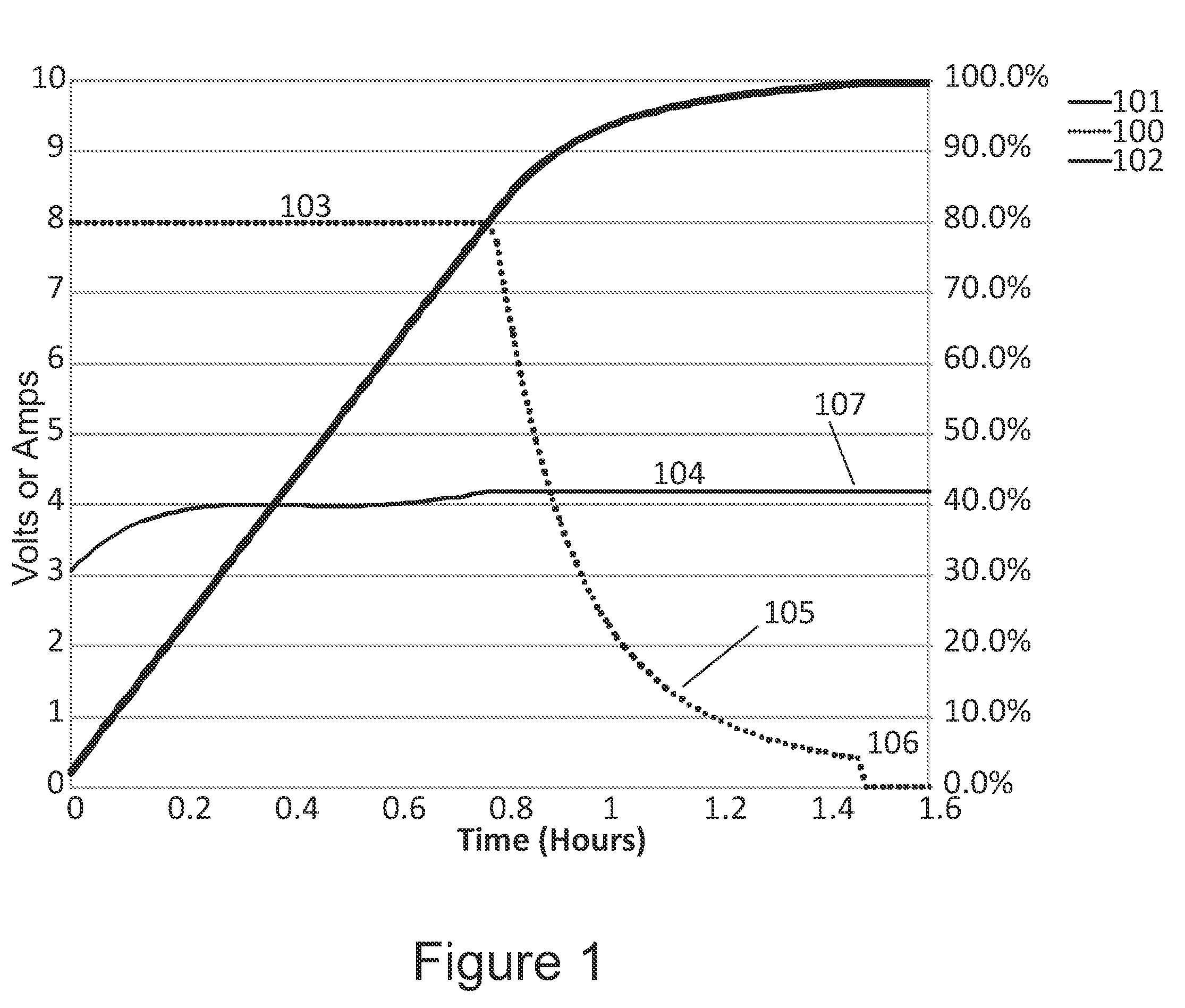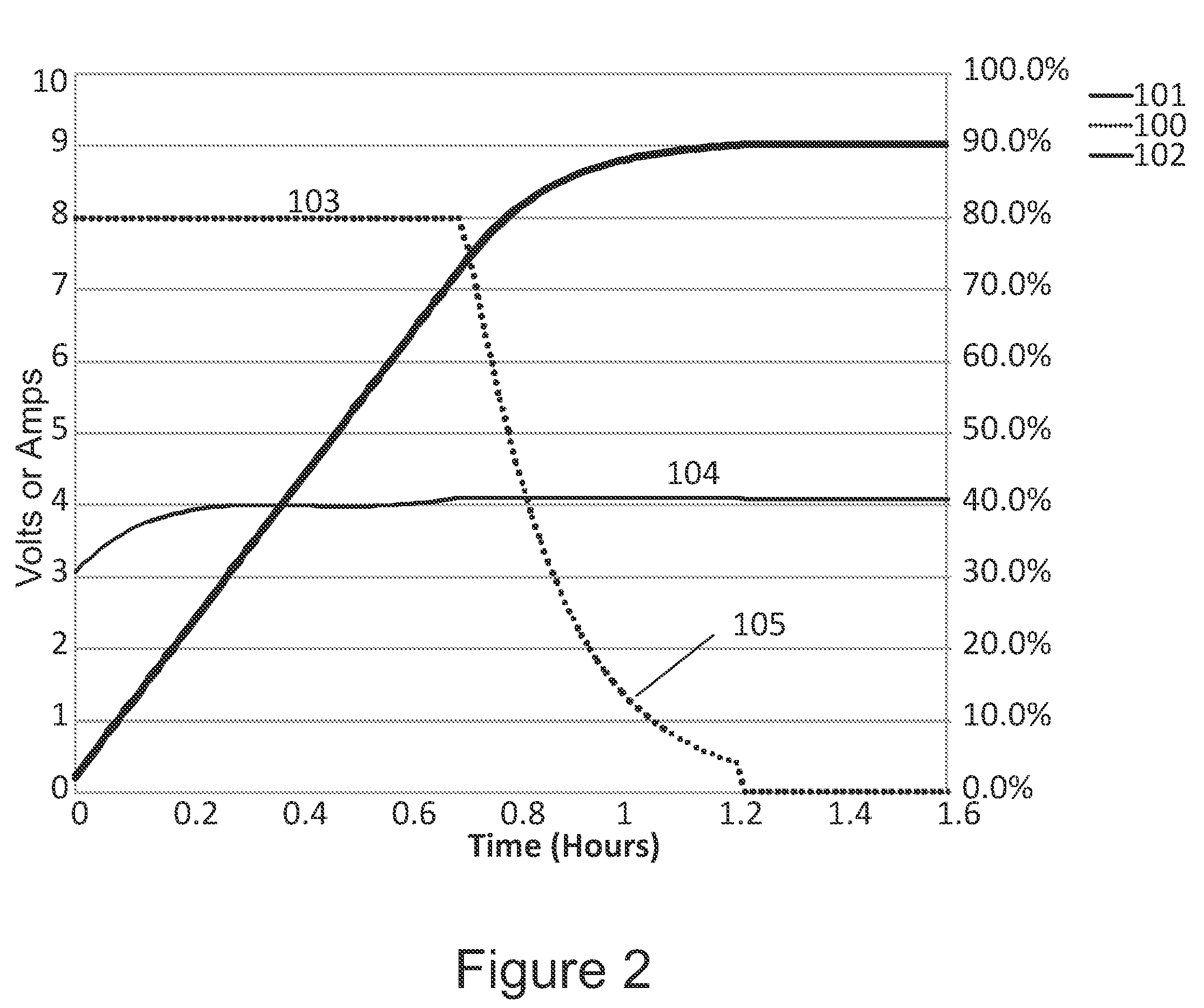System and method of limiting degradation of the battery by prohibiting over-charge with measured temperatures
a technology of measured temperature and degradation rate, applied in the field of system and method of limiting degradation of battery, can solve the problems of irreversible loss of battery capacity, dramatic increase in unwanted side reactions, etc., and achieve the effect of reducing the total charge time, and reducing the degradation rate of battery
- Summary
- Abstract
- Description
- Claims
- Application Information
AI Technical Summary
Benefits of technology
Problems solved by technology
Method used
Image
Examples
Embodiment Construction
[0026]Referring to FIG. 1, lithium batteries are usually charged with a method called CCCV, this refers to Constant Current Constant Voltage. A fully discharged lithium battery will start with a fixed level of charging current. This current is chosen based on the manufacturer's recommendations, or the power limits of the charge system itself due to size, heat dissipation and available power sources. An optimal rate of charging is usually 1 C, where C is the capacity of the battery. Hence an 8 amp-hour battery will often be charged with a fixed current of 8 amps. The graph shows charging current (100), cell voltage (101) and approximate cell capacity (102). When charged at a 1 C rate, the battery will generally reach about 80% of full charge capacity at the point where the individual cells reach about 4.2 volts. The region of charging with a fixed current is called the Constant Current region (103). For lithium cobalt technologies, a cell voltage of 4.2 volts represents the highest v...
PUM
| Property | Measurement | Unit |
|---|---|---|
| temperature | aaaaa | aaaaa |
| temperature | aaaaa | aaaaa |
| temperature | aaaaa | aaaaa |
Abstract
Description
Claims
Application Information
 Login to View More
Login to View More - R&D
- Intellectual Property
- Life Sciences
- Materials
- Tech Scout
- Unparalleled Data Quality
- Higher Quality Content
- 60% Fewer Hallucinations
Browse by: Latest US Patents, China's latest patents, Technical Efficacy Thesaurus, Application Domain, Technology Topic, Popular Technical Reports.
© 2025 PatSnap. All rights reserved.Legal|Privacy policy|Modern Slavery Act Transparency Statement|Sitemap|About US| Contact US: help@patsnap.com



